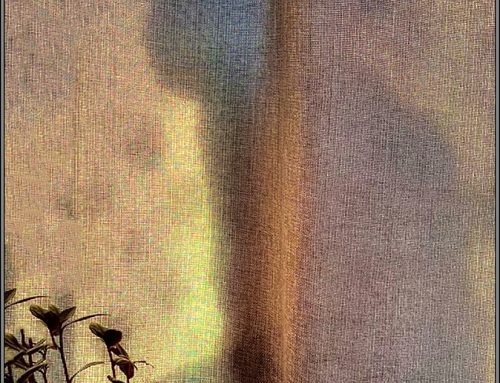From Urban Exploration to Fine Art, A Photographic Journey
Viveca’s talk concerned visits to decaying asylums, mortuaries, industrial sites (such as a vast power plant in Belgium), and even houses. These buildings were always treated with the utmost respect and, as in the oft-quoted countryside guidance, the aim was to “take only pictures, leave only footprints”.
More of Viveca’s work, including her RPS panels, can be found on her website at https://vivecakohphotography.photoshelter.com/
Last Wednesday (26 September 2018) club members were marvellously stimulated and entertained by Viveca Koh FRPS and her captivating illustrated talk “From Urban Exploration to Fine Art, A Photographic Journey”.
Viveca is a self-taught photographer who specialises in fine art photography, digital image manipulation and photo-illustration. She first picked up a camera at the age of seven. But she only took photography really seriously after studying art at Central Saint Martins, the renowned arts and design college in London, when she developed an interest in photographing architecture and street art.
Friendship with another photographer of street art got her into the more rarefied world of urban exploration (aka “UrbEx” or “UE”), the exploration of abandoned and forgotten buildings.
Accordingly, most of Viveca’s talk concerned visits to decaying asylums, mortuaries, industrial sites (such as a vast power plant in Belgium), and even houses. These buildings were always treated with the utmost respect and, as in the oft-quoted countryside guidance, the aim was to “take only pictures, leave only footprints”.
As her experience grew in this lesser-practiced photographic genre she developed a fascination for small details and abandoned objects. She was more likely to take a picture of a detail than a whole room. So, in addition to wider architectural shots, there were lots of images of deteriorating notices, books, documents, clothes, shoes, suitcases, chairs, light switches, old photos, bottles, and so forth. There were also self-portraits (some in costume) and “crew shots” (in which the urban explorers try to appear as “hardcore” as possible) taken in the crumbling buildings – apparently, these are traditional UrbEx flourishes.
Apart from a little light-painting, all Viveca’s UrbEx images were taken in natural light (a tripod is an essential kit for the urban explorer). She always looked for darkness contrasting with light and regarded shadows as integral to the atmosphere of these often melancholic places. So, in such challenging conditions, she needed to blend bracketed exposures to (for example) maintain details in a bright window in a dingy room.
Viveca’s early post-processing style involved cropping to a square format, putting a black-and-white layer on top of the image (with reduced opacity) and adding a black border and a slight vignette. The overall effect was a very atmospheric, slightly desaturated but contrasty, look. Later she began to overlay textures such as cracked or peeling paint, rust, wrinkled paper, patterned wallpaper, and interesting skies. Initially, this was to enhance the “derelictness” of the subject matter. But it has now developed into a more painterly fine art sort of style.
As part of the talk, Viveca showed us the panels with which she achieved her LRPS in April 2010 and her ARPS in June 2011. (She achieved her FRPS in June 2014.) For the LRPS she produced a set of ten poignant images based on the idea of “birth to death in an asylum”. For the ARPS she created a collection of 15, equally poignant, images of abandoned objects called “Left Behind”.
Viveca’s overall photographic aim is to keep moving on and developing and not stagnate. From that early start in urban exploration, she has developed into a more artistic and creative photographer. And her more recent work includes abstract and surreal pictures.
Viveca is a fluent and engaging presenter and laced this lavishly illustrated talk with plenty of explanation about the places photographed, the techniques used, and her artistic vision. More pertinently, though, the images she showed us were fascinating and emotive – they were sensitive, moving, interesting, poignant, powerful, and so much more. UrbEx pictures of this sort may not be everyone’s cup of tea. But these images demonstrated so well that photography is not just about what you photograph, it’s about what you create. This was an absorbing, thought-provoking and inspirational talk.
More of Viveca’s work, including her RPS panels, can be found on her website at https://vivecakohphotography.photoshelter.com/
RPS Distinctions
There are three levels of RPS distinctions and they are achieved by submitting panels of images (prints or PDIs) for assessment by the RPS:
- Licentiate of the RPS (LRPS) – Requires 10 images which reflect your ability as a photographer. Applicants must show variety in approach and techniques but not necessarily in subject matter. Demanding but achievable for most dedicated photographers.
- Associate of the RPS (ARPS) – Requires a body of work/project of 15 images of a high standard and a written Statement of Intent. At this stage, creative ability and personal style (what makes your work unique to you), along with complete control of the technical aspects of photography must be evident. Work must fall into one of nine specified categories.
- Fellowship of the RPS (FRPS) – Requires a body of work/project of 20/21 images of a distinguished photographic and creative standard accompanied by a Statement of Intent. This is the highest level of distinction (and ARPS is a pre-requisite). More about the RPS distinctions can be found at www.rps.org/distinctions












Brilliant account of the evening Patrick. Thoroughly absorbing.